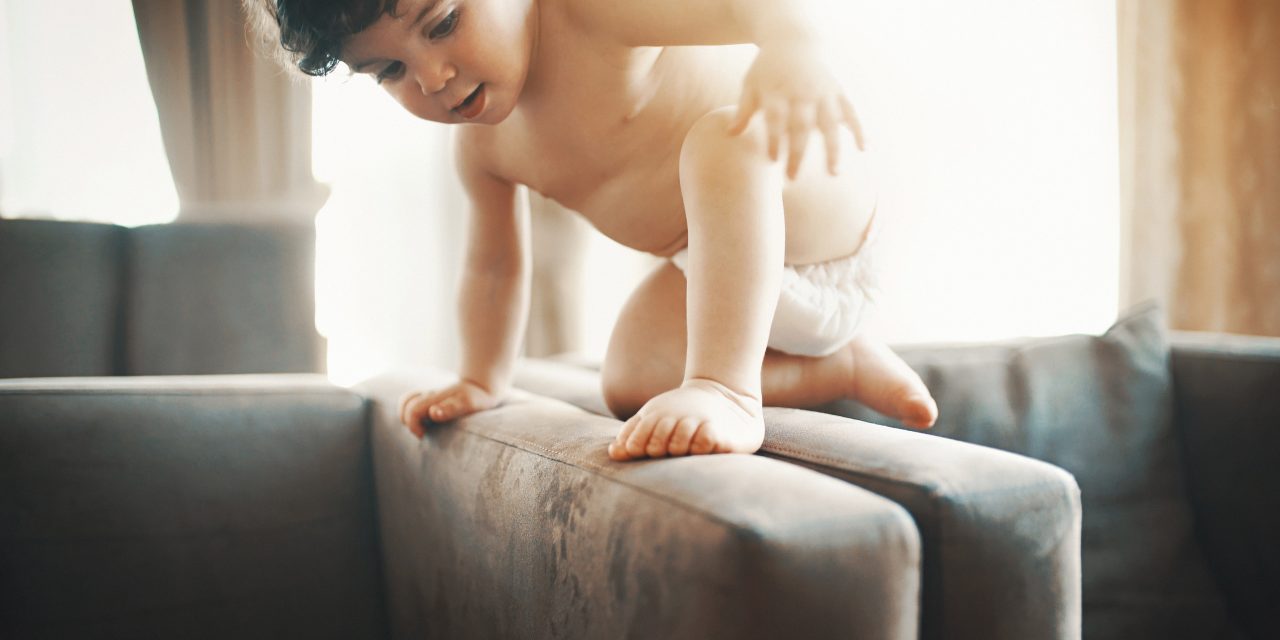East Sussex has the second highest rate of hospital admissions in the South East for 0-4 year olds, due to falls from furniture.
The abilities that our children acquire as they grow and develop – such as grabbing, rolling over, crawling, standing, climbing, and turning handles – can often delight us as parents and carers. But these same abilities, when they take us by surprise, have the potential to result in serious childhood accidents, including falls.
The Child Accident Prevention Trust offers some simple steps you can take to minimise the risk of falls and top tips for keeping children safe:
Stairs
- One of the worst ways for small babies to be injured on the stairs is when they are being carried by a parent who slips or trips.
- Keep a hand free to hold on to a rail or bannister when carrying your baby up or down the stairs.
- As soon as your baby starts crawling, fit safety gates to stop them climbing or falling down the stairs.
Highchairs
- Many babies will try to climb out of their highchair to get things that are out of their reach.
- Strap babies and toddlers into their highchair every time you use it.
Windows
- Many toddlers can operate window catches and will fit their bodies through
- surprisingly small gaps.
- Take care not to put furniture in front of windows so there is nothing for children to climb onto.
- Fit safety locks or catches to your windows to stop them opening too wide.
- Make sure your family know where the keys are in case of fire.
Cots, beds and changing tables
- Babies can wriggle their way to the edge of a bed or changing table if left alone, even for a moment.
- Don’t ever leave a baby alone on a raised surface.
- As soon as your baby can stand, take any large toys they might climb on out of their cot to stop them falling out.
Trampolines
This is a great way for children and young people to get fit, as long as you follow these safety tips:
- Make sure there is just one child on the trampoline at any time. The biggest risk is from adults and children bouncing together, due to the difference in weights.
- Use safety netting or a safety cage so children can’t be thrown to the ground.
For more information about keeping your little ones safe, please visit The Child Accident Prevention Trust website




